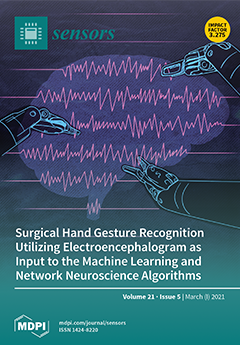Depth cameras are developing widely. One of their main virtues is that, based on their data and by applying machine learning algorithms and techniques, it is possible to perform body tracking and make an accurate three-dimensional representation of body movement. Specifically, this paper
[...] Read more.
Depth cameras are developing widely. One of their main virtues is that, based on their data and by applying machine learning algorithms and techniques, it is possible to perform body tracking and make an accurate three-dimensional representation of body movement. Specifically, this paper will use the Kinect v2 device, which incorporates a random forest algorithm for 25 joints detection in the human body. However, although Kinect v2 is a powerful tool, there are circumstances in which the device’s design does not allow the extraction of such data or the accuracy of the data is low, as is usually the case with foot position. We propose a method of acquiring this data in circumstances where the Kinect v2 device does not recognize the body when only the lower limbs are visible, improving the ankle angle’s precision employing projection lines. Using a region-based convolutional neural network (Mask RCNN) for body recognition, raw data extraction for automatic ankle angle measurement has been achieved. All angles have been evaluated by inertial measurement units (IMUs) as gold standard. For the six tests carried out at different fixed distances between 0.5 and 4 m to the Kinect, we have obtained (mean ± SD) a Pearson’s coefficient,
r = 0.89 ± 0.04, a Spearman’s coefficient,
ρ = 0.83 ± 0.09, a root mean square error, RMSE = 10.7 ± 2.6 deg and a mean absolute error, MAE = 7.5 ± 1.8 deg. For the walking test, or variable distance test, we have obtained a Pearson’s coefficient,
r = 0.74, a Spearman’s coefficient,
ρ = 0.72, an RMSE = 6.4 deg and an MAE = 4.7 deg.
Full article






